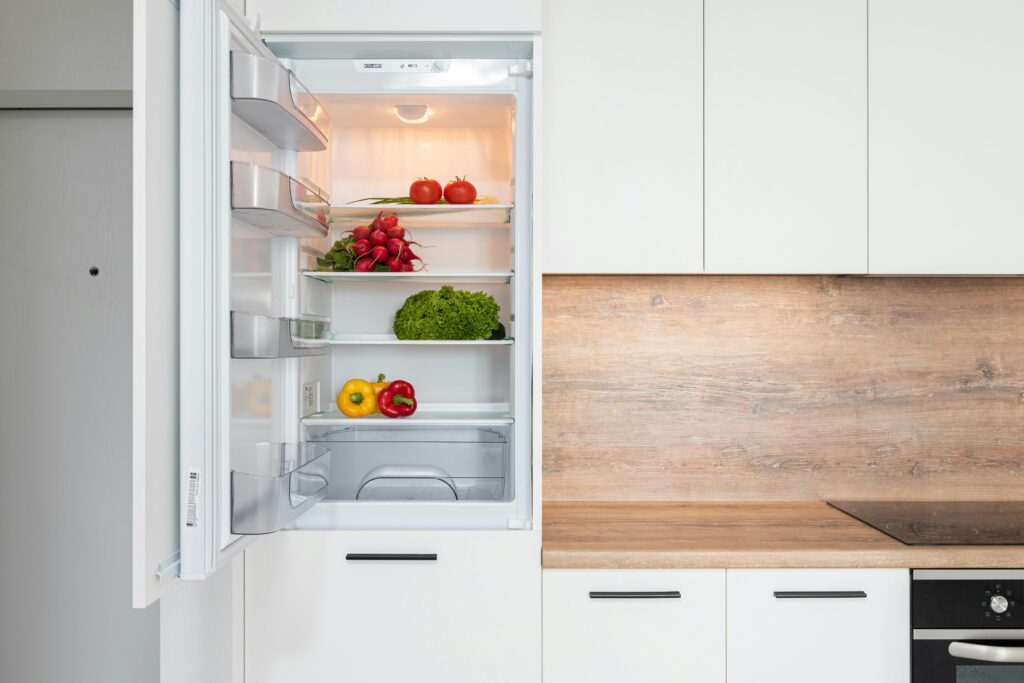Photo by Théo Cold
If you’ve ever seen a racehorse stable up close, you already know feeding is one of the most crucial aspects. There’s hay, grain, supplements, pallets, silos, bags, bins, and, for some stables, a stack of forage that looks more like hay art than practical storage.
Why? Well, behind every fast Thoroughbred, there is a lot of planning, hard work, sweat, and improvisation just to make sure every feed is fresh, safe, and on time. Trust me, it is hard work, and the logistics behind the stable kitchen are a real nightmare if not done properly.
So, how do professional stables pull it off? Let’s dive into the logistics of every Thoroughbred stable, find all the little hacks they deploy just to make sure the horse has the best conditions possible.
How Is Horse Food Managed At the Stables?
First of all, if you don’t already know, racehorses eat A LOT! It’s not just one bag of grain and you’re done. Depending on the horse’s workload, and that depends on their racing schedule, the feed mix shifts. In other words, horses don’t eat the same thing every day. Equine nutrition is all about balance.
For example, a racehorse in heavy training might need more energy-dense feeds, more oil or fat, and more balanced hard feed plus plenty of forage. But then on rest days, the ratio leans more toward hay or lighter concentrates.
It is already complicated, right? Stables typically contract monthly or even weekly feed deliveries from trusted mills. Bulk grain, pallets, and baled hay come in large shipments. This means that deliveries should adobe coordinated just so they don’t sit for too long (risk of spoilage or pests), but also so there’s always enough to avoid panic.
So, the horse training regime is calculated in advance, and so is their diet. Then stable workers order enough food for a week. To make things even more difficult, stable workers need to worry about food storage and weather conditions.
Horse Food Storage
Since horses eat a lot of food, and the food is bulky (taking a lot of space), food storage is a really important part of the process. You might think keeping a few bags of grain dry is easy, and in reality, it’s not.
You have to worry about moisture, heat, vermin, and time. These are the four villains of the barn that hunt stable workers down. If any of them wins, you have to deal with mold, nutrient loss, or worse, sick horses, and nobody wants that.
Food storage in proper horse racing farms usually has two main zones. One is bulk storage: silos (for grain) or large barns/haylofs (for forage, hay, haylage). These are built or retrofitted to keep things cool, dry, and ventilated.
For example, hay bales are often stacked on pallets so the bottom layers aren’t sitting in dampness (which invites mold). For grains and concentrates, sealed bins or silos are often used, with metal or tough plastic, with tight lids just to keep out rodents.
Then there is the “daily feed room”, which is the prep area, where grain scoops, supplements, feeders, and bowls live. You’ll need this place to be impeccably clean, well-organized, and each horse’s feed mix clearly labeled. Plus, every tool that supplies horses with food needs to be washed and dried regularly, making the job even more difficult.
Logistics & Workflow
The most difficult thing so far is managing all the different variables in a stable. The smoothest stables that produce in big races like the Breeders’ Cup are often those in rhythm with logistics.
The Breeders’ Cup is a special event where horses need to be in top form, so food is carefully planned weeks before the event. You can check the 2025 Breeders’ Cup results, and I guarantee you that the winning horse had the best living conditions. It’s hard to manage, but doable with the right strategy.
In early mornings, you should check feed levels, mix up any special rations (extra electrolytes, oil, or recovery feed). By mid-morning, you top up hay, refill grain bins, and sweep up spilled feed. Then, in the afternoon, prep again for evening feeding, clean out buckets, secure bins, and check that pest control is working.
Timing is also important. You have to plan the food and feed truck deliveries just so the horse gets the highest nutrients possible.
Cleanliness, Safety & Waste Prevention
If feed storage or prep isn’t clean, stuff goes bad, animals get sick, and staff end up running in circles. A lot of waste comes not from bad feed but from poor storage: rodents gnawing, moisture sneaking in, feed turning dusty or clumping, or old feed mixed with new.
Best practices: bins and feed rooms get swept, residual feed cleaned out, and bins dried before refilling. Containers are labeled with feed type and “use by” dates. Frequent checks for signs of spoilage or infestation. And safety: feed rooms are locked so horses can’t break in (horses + feed = comedy in farm stories, but terrifying in real life). Bales of hay are stored away from sources of ignition because dry hay can be a fire risk.
So, there you have it. It’s not quite sexy, but absolutely crucial side of horse training. So, next time you see a racehorse looking strong and healthy, remember there is a whole team behind it.


 Nutrition Specialist
As a certified nutritionist, Victoria focuses on promoting healthy eating through balanced meal ideas. She is dedicated to empowering readers to make informed food choices and understand the benefits of nutrition. Victoria's articles feature practical tips and delicious recipes that cater to various dietary needs, making healthy eating accessible for everyone.
Nutrition Specialist
As a certified nutritionist, Victoria focuses on promoting healthy eating through balanced meal ideas. She is dedicated to empowering readers to make informed food choices and understand the benefits of nutrition. Victoria's articles feature practical tips and delicious recipes that cater to various dietary needs, making healthy eating accessible for everyone.
